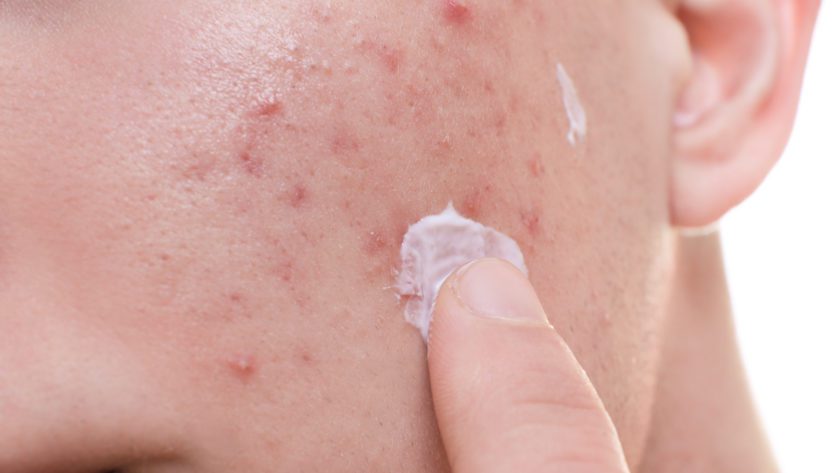Los Angeles County’s mask mandate was re-instated this weekend and 10 California counties are now strongly recommending face masks indoors. So if you’re suffering from mask-related acne or “maskne”, it may not be going away anytime soon. Joined KRON 4’s Weekend Morning News anchor, Noelle Bellow, and shared some tips to help prevent and cope with this side effect of wearing a mask.
Maskne Is Not New
Mask-related acne has always plagued people in professions where they have to wear a mask regularly, but now that the general public has to wear a mask (and often for long periods), maskne has become more of a public health problem.
The Science Behind Maskne
- Yeast, bacteria, and other flora (e.g., skin mites that live on your skin) are present on the skin.
- When you breath, you expel warm, moist air that gets trapped inside of your mask. This warm, humid environment is the ideal setting for the yeast, bacteria, and skin mites grow.
- These microorganisms can clog (and infect) your pores and also create friction between your mask and skin, resulting in little pimples and pustules (small bumps on the skin that contain fluid or pus).
Clogged pores = breakouts. Your pores are simply openings to canals into the deeper layers of your skin. These canals are called follicles that contain a hair and a sebaceous gland (oil gland).
The sebaceous gland excretes sebum (oil), which freely travels up the canal to the surface of your skin to keep your skin lubricated. However, when the follicle fills up with yeast, bacteria, and skin mites, the sebum gets trapped in the canal, and the pore becomes clogged.
The Three Keys to Preventing Maskne
- Skin hygiene
- Mask hygiene
- Oral hygiene
1. Skin Hygiene
- Wash your face with a gentle foaming cleanser (nothing too harsh that will dry the skin and further irritate the skin). You can use one with salicylic acid. Salycylic acid (beta hydroxy acid) is known for reducing acne by exfoliating the skin and keeping pores clear.
- To help remove excess yeast buildup, you can wash your face 2-3 times a week with a dandruff shampoo that contains selenium sulfide, zinc pyrithione (peer-ih-THIY-ohn), or ketoconazole. These ingredients are antibacterial, antimicrobial, and antifungal agents. (Yeast is the main factor in dandruff.)
- Cleanse your skin with a simple toner (e.g., a few drops of witch hazel on a cotton ball) or an unscented baby wipe if you have to wear the mask for long periods during the day or have facial hair.
- Warm air and moisture from sweat get trapped under the thick layer of hair (beards and mustaches), so clean face between washings.
- Be sure the skin and hair on your face are completely dry before putting on the mask.
- Apply a light layer of makeup, lotion, or sunblock (with zinc oxide or titanium dioxide). It may help serve as barrier against irritating friction between your skin and mask. Thick layers of these products can aggravate acne.
2. Mask Hygiene
- Change masks frequently — especially after exercising and sweating.
- Wash masks after use for infection control and to reduce irritation.
- Always wash new cloth masks before wearing them. Fabrics likely to have been treated with formaldehyde* resins are: rayon, synthetic-blended cotton, wrinkle-resistant 100% cotton. They can cause allergic contact dermatitis.
*Levels of formaldehyde levels in clothing have decreased significantly since studies were performed in the 1980s, but are still present.
- Wash masks with a fragrance-free detergent and rinse, rinse, rinse! Dirt and germs are lifted off the surface and trapped by the detergent. If you don’t rinse well, you end up with a mask with both germs AND detergent on it.
- Don’t use fabric softener on masks, which contain quaternary ammonium compounds to fight against static. According to a study (NYU School of Medicine), these compounds have also been found to cause skin and respiratory irritation.
3. Oral Hygiene (Avoid “Mask Mouth”)
Mask mouth symptoms include bad breath, tooth decay, and gum inflammation.
- Don’t breathe through your mouth. It dries out the mouth, which leads to bad breath. When you breathe out of your mouth, the bacteria from your mouth gets trapped in your mask. Mask wearers tend to breathe through their masks.
- Stay hydrated.
- Practice good oral hygiene. Floss and brush regularly.
- Don’t eat mints or chew sugary gum, which exacerbates decay.
- Change your mask frequently and WASH them frequently.

![]() Karen’s Fit Tip: Remember the three keys to prevention: 1) Good skin hygiene, 2) Good mask hygiene, and 3) Good oral hygiene.
Karen’s Fit Tip: Remember the three keys to prevention: 1) Good skin hygiene, 2) Good mask hygiene, and 3) Good oral hygiene.

